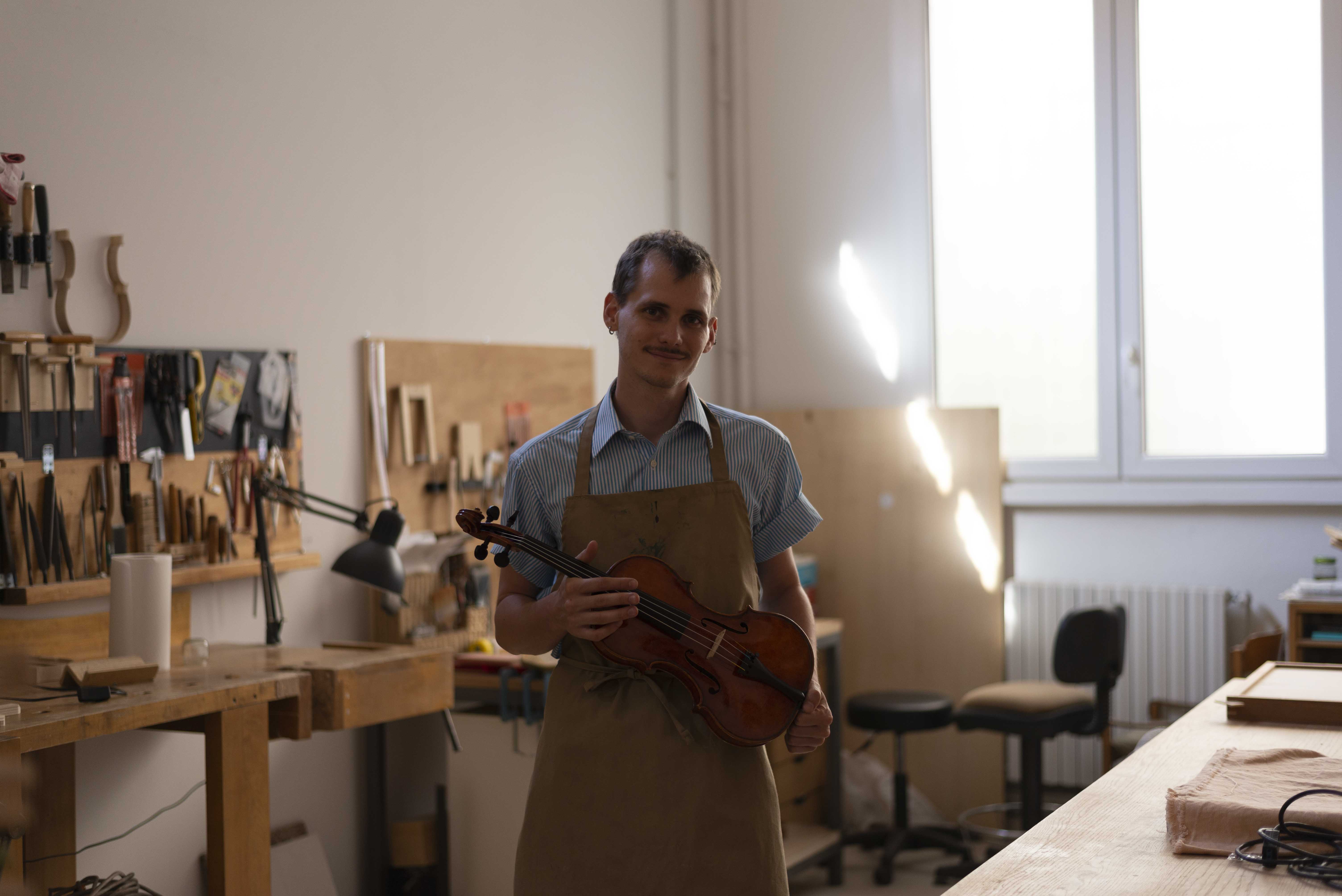Timeless harmonies: the Ruffatti Brothers and the everlasting organ tradition
Fratelli Ruffatti is a craft company of pipe organ builders and restorers. The workshop was established in Padua in 1940, and in a short time, thanks to the skill of their founders and the beauty and quality of their musical instruments, they obtained important commissions not only in Italy, but all over the world: from Europe to Asia, from Africa to the United States.
The company was among the first in the country to undertake the construction of organs using the mechanical system, already in the 1960s. Every component is hand-made in their workshop, with meticulous attention to detail: this allows for maximum quality control and customisation of each instrument.
In 2020, Piero and Francesco Ruffatti, the second generation at the helm of the business, were awarded the accolade “MAM – Maestro d’Arte e Mestiere” (Master of Arts and Crafts) by Fondazione Cologni.
What is the history of “Fratelli Ruffatti” and how did you approach the world of musical instruments?
The company was founded in 1940 by three partners, the brothers Antonio, Giuseppe and Alessio Ruffatti. After an apprenticeship at the renowned Malvestio company in Padua, which was closing down at the time, they began their journey independently, quickly gaining the trust and appreciation of many organists and customers.
Also thanks to the technical innovations they developed, the fame of the family company Fratelli Ruffatti reached every corner of Italy and, in the 1960s, even established itself on foreign markets, mainly Canada and the United States.
When, in 1968, alongside Antonio, who was the only one left of the three founding partners, his sons Piero and Francesco took over the business, the company gained even greater momentum, especially in export. To this day, in so many years of work, we have built more than six hundred instruments: some of them are huge, and they are across all continents. The main markets, in addition to Italy, are England, Ireland, Sweden, the United States, but also Australia, Korea, Japan, China and other countries.

What does it mean to pass on such an important tradition?
It is a privilege, but also a great responsibility. Especially if we think that Padua has been a documented “City of Organs” since the first half of the 14th Century!
How is an organ made, what is its making process?
The organ is the most complex musical instrument of all. In our workshop, we still use ancient techniques, and try to produce ourselves all the elements that make up the organ. There are very few of us left to do this: for example, among other things, we still cast the slabs ourselves to make our pipes, in tin and lead alloy.
Are there any masters you are inspired by, or a craft company that you particularly appreciate?
Our tradition dates back to the 18th Century Venetian Organ School. We have restored many of these instruments, in particular the ones built by the renowned organ maker Gaetano Callido (1727-1813), who is still an important point of reference for us. At the same time, however, we always try to innovate, by introducing new solutions according to the changing tastes and needs of musicians.

How important is design when making a musical instrument?
The organ is the only non-standardised musical instrument. This means that each instrument is different from all others in terms of size, aesthetic appearance, phonic composition, and it must adapt to ever-changing locations. Therefore, design is a key element. Every aspect of the organ must be designed and built according to the venue where it will be placed: the internal arrangement of its parts, the aesthetic appearance (which depends also on the architectural characteristics of the environment) and the composition of its ranks, i.e. the pitches and timbres.
What is the most important, or most challenging, project you have done so far?
There are many of them. The largest in size is an instrument made for Christ Cathedral in Garden Grove, near Los Angeles. It has over 16,000 pipes, it is the size of an apartment building and it is among the five largest organs in the world. Other largew instruments include the five-keyboard organ for the San Francisco Symphony Orchestra hall and the six-keyboard organ for the Basilica of Monreale (Palermo).
How do you combine tradition and innovation in your work?
Even though we come from an important tradition, it is necessary to consider that the organ is an instrument in continuous evolution. So, at least for us, it is unthinkable to design and create instruments exclusively according to the criteria of the past. For this reason, in recent years we have also collaborated with the Fraunhofer Institut in Stuttgart, in order to seek new solutions to increasingly improve the technical and phonic performance of the instruments.
Fratelli Ruffatti
Via Facciolati, 166 – Padua
+39 049 750666
michela@ruffatti.com
www.ruffatti.com







